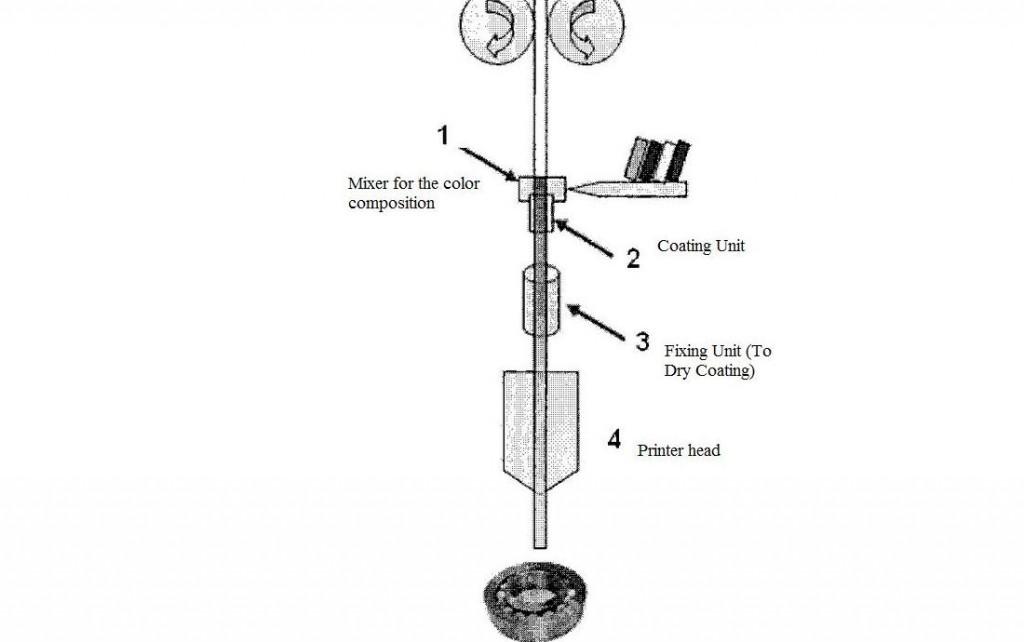Fused deposition modeling technology is one of the more popular methods of 3D printing among hobbyists, as well as those seeking a cheap way to get involved with 3D printing. One of the biggest complaints that we hear from  people buying FDM based printers, is that there has yet to be a reliable approach to printing numerous colors on one object. BotObjects is one of the few companies which has seemingly come up with a solution to print in more than one color. Other than this one company, and a few others that require multiple extruders heads that take up much of the build volume, little progress has been made.
people buying FDM based printers, is that there has yet to be a reliable approach to printing numerous colors on one object. BotObjects is one of the few companies which has seemingly come up with a solution to print in more than one color. Other than this one company, and a few others that require multiple extruders heads that take up much of the build volume, little progress has been made.
This may be about to change though. A recent patent application was filed back in October, and has just recently been published online. The patent is for a process which will enable a 3D printer to coat a polymer filament with color or a material, just prior to it being extruded from the printer. The invention, credited to Markus Pridoehl, Guenter Schmitt, Dirk Poppe, Stephan Kohlstruk, Benjamin Hammann, Sonja Cremer, Kris Beks, Ludo Dewaelheyns, and filed for by Evonik Industries Ag, a German chemical manufacturing company, could provide a number of benefits to those using FDM 3D printers. The abstract of the invention reads as follow:
“A 3D extrusion print process for producing multicolored three-dimensional objects is provided. The process produces mechanically stable, multicolored 3D objects with good color definition. The process according to the invention is based on coating, upstream of the printing head, of the polymer strand used for producing the actual object, and on fixing of the coating upstream of entry of the polymer strand into the printing head. Downstream of the extrusion process in the printing head, the coating remains predominantly at the surface of the extruded strand.”
What this invention would do, is add two additional units above the print nozzle. One unit would coat the build material (filament) with an additive composition, which could include colored dye, prior to the material entering the next unit, which is the fixing unit. The fixing unit will dry the coating, prior to entering the print nozzle to be melted. The coating unit will have one or more nozzles, equipped with an inkjet-like print head to excrete the ink or dye onto the filament. An alternative method would be to run the filament through a sponge-like material which has been saturated with a colored ink. This would almost function like the Sharpie marker ‘Ultimate Filament Colorer’ created by Mathew Beebe, which we discussed last month.
Once the filament is dyed, it will then need to be dried prior to entering the print head. To do this, they suggest several solutions which include an air drying mechanism, between the coating unit and print head, or using chemical reactions, or microwave radiation to accelerate the drying process.

This diagram shows the various units needed for this new printing process. The filament is first colored, then dried, and then melted/extruded.
In addition to coloring the filament, the patent filing also discusses the possibilities of coating the filament with different inorganic additives, to give the printed object, properties it normally wouldn’t possess. The filing explains this in the following passage:
“It may also be possible to apply inorganic additives in order to reduce the flammability of the 3D object, or in order to improve thermal properties, surface conductivity and/or haptic properties, an example being silicon oxide, aluminum oxide or—in the case of dark-colored objects—carbon black as additive on the surface. The respective effect here is markedly more effective than when the corresponding additives have been added to the matrix of the material. Graphene can be used as additive in particular in order to improve the thermal and electrical conductivity of the surface.”
The ability to coat a filament with materials like carbon black or graphene, could allow for the printing of circuits and other conductive units within a plastic print. Clearly this is quite an interesting approach, taken by the inventors, and could eventually lead to a more streamlined FDM based 3D printing process. We would love to hear feedback on this patent filing. Discuss it at the 3DPB.com forum thread for ‘FDM based 3D printing colorization.’
Subscribe to Our Email Newsletter
Stay up-to-date on all the latest news from the 3D printing industry and receive information and offers from third party vendors.
You May Also Like
Gorilla Sports GE’s First 3D Printed Titanium Cast
How do you help a gorilla with a broken arm? Sounds like the start of a bad joke a zookeeper might tell, but it’s an actual dilemma recently faced by...
Nylon 3D Printed Parts Made More Functional with Coatings & Colors
Parts 3D printed from polyamide (PA, Nylon) 12 using powder bed fusion (PBF) are a mainstay in the additive manufacturing (AM) industry. While post-finishing processes have improved the porosity of...
$25M to Back Sintavia’s Largest Expansion of Metal 3D Printing Capacity Since 2019
Sintavia, the digital manufacturing company specializing in mission-critical parts for strategic sectors, announced a $25 million investment to increase its production capacity, the largest expansion to its operations since 2019....
Velo3D Initiates Public Offering in a Bid to Strengthen Financial Foundations and Drive Future Growth
Velo3D (NYSE: VLD) has been among a number of publicly traded 3D printing firms that have attempted to weather the current macroeconomic climate. After posting a challenging financial report for 2023,...






























